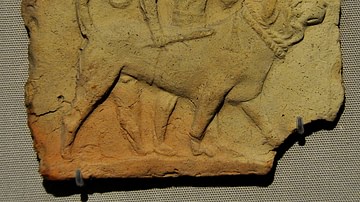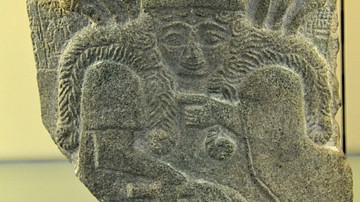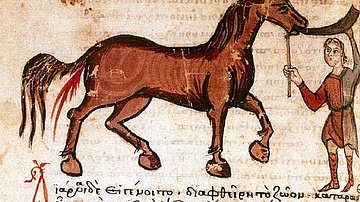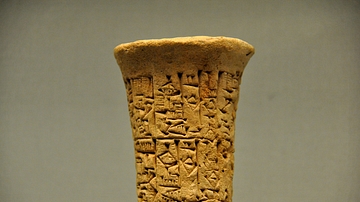Search
Search Results

Article
Dogs & Their Collars in Ancient Mesopotamia
Among the many contributions to world culture credited to Mesopotamia is an object so familiar to people in the modern world that few pause to consider its origin: the dog collar. Throughout the ancient world, from China to Rome, dogs are...

Definition
Mesopotamian Art and Architecture
Ancient Mesopotamian art and architectural works are among the oldest in the world, dating back over 7,000 years. The works first appear in northern Mesopotamia prior to the Ubaid Period (c. 5000-4100 BCE) and then developed in the south...

Definition
Nisaba
Nisaba (also Naga, Se-Naga, Nissaba, Nidaba, and associated with Nanibgal) is the Sumerian goddess of writing, accounts, and scribe of the gods. Although her name is commonly given as Nidaba, noted scholar Jeremy Black points out that "the...

Definition
Sumerian Language
The Sumerian language was spoken in southern Mesopotamia before the 2nd millennium BCE and was the first language to be written in the cuneiform script. It is an isolate language meaning we know of no other languages that relate to it ancestrally...

3D Image
Mesopotamian Statue of Gudea - 3D VIew
Upper part of standing figure with head; carved and polished mottled green dolerite; but neck restored. Gudea was the ruler of the city-state of Lagash. One of a dynasty of rulers in southern Mesopotamia who expanded their authority following...

Article
The Mesopotamian Pantheon
The gods of the Mesopotamian region were not uniform in name, power, provenance or status in the hierarchy. Mesopotamian culture varied from region to region and, because of this, Marduk should not be regarded as King of the Gods in the same...

Article
A Brief History of Veterinary Medicine
The English word 'veterinarian' as defining one who provides medical care to animals, comes from the Latin verb veheri meaning “to draw” (as in "pull") and was first applied to those who cared for “any animal that works with a yoke” – cattle...

Definition
Hammurabi
Hammurabi (r. 1792-1750 BCE) was the sixth king of the Amorite First Dynasty of Babylon best known for his famous law code which served as the model for others, including the Mosaic Law of the Bible. He was the first ruler able to successfully...

Image
Foundation Peg of Entemena
This is a baked clay foundation peg, which was dedicated by Entemena, king of Lagash. It refers to a treaty with the king of Uruk. The political bond between Lagash and Uruk mentioned in this text is the earliest formal interstate relationship...

Image
Inscribed Giant River-worn Pebble
The cuneiform inscriptions mention that Enannatum, king of Lagash, reminds the gods of his prolific temple building achievements in the city of Lagash. From Girsu (modern-day Tell Telloh, Dhi-Qar Governorate, Iraq), Mesopotamia. Early dynastic...